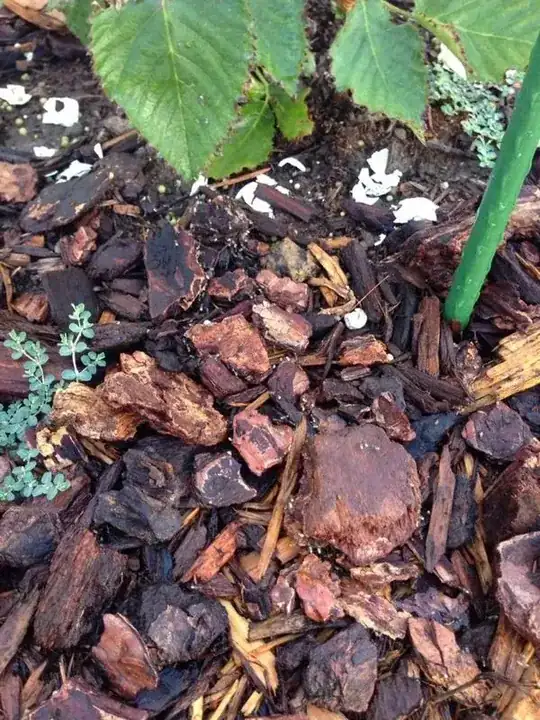Most species of ants generally don't cause a problem in gardens. They do tunnel, and if too excessively there can be trouble, and they can farm aphids on your plants, and protect them from possible predators. But on your plants, I don't see that they're an issue. They will clean up fallen fruit, if any, eat some bugs (mostly the herbivorous bugs), and generally not be a problem. They tend to nest where it's dry, so if they seem to be more concentrated under your plants, they may be too dry.
If the ant populations get out of control, you can use pyrethrum, or if you don't mind chemicals, something like Carbaryl.
Here's an article that has relevance.
For most species, control is only necessary in the garden if the population gets out of hand. Garden varieties do not actually eat plants or actively destroy any plant matter. Their main source of food is sugar, usually found in nectar, sap, or the honeydew excrement from aphids. In some cases, garden ants can actually be a beneficial insect as they will kill off more destructive pests like caterpillars. They are also natural soil aerators through their extensive tunneling systems. As food for beneficial animals such as birds, lizards, and toads, they will also encourage wildlife to flourish in your garden.
No matter what types you want to reduce, the control methods are similar. As any species can hurt plants by mining nests around roots, if they are excessive in your garden, you will want to reduce the population. They are most problematic to new plants with young roots and lawns. In lawns, you know they are present when you see nest mounds that smother the grass and create unsightly patches. An easy solution to this problem is to grow your grass longer to hide the patches and live with the ants. If this is not your preference, you will have to treat the nests.
In addition to their nesting structures, they have another characteristic that can quickly create a problem in your garden - farming other insects. Certain varieties actually farm aphids for their honeydew. This can quickly create a rather significant aphid problem in your yard as the ants will kill off their natural predators.
